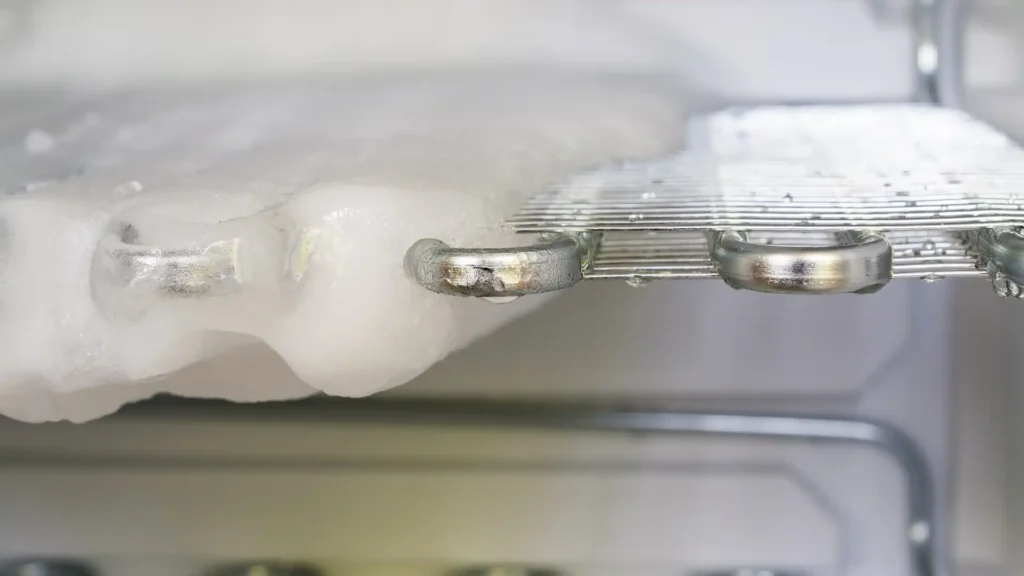Opened the fridge and found warm milk or wilted veggies? Don’t panic. A Samsung fridge not cooling doesn’t always mean a major breakdown. In this guide, we’ll walk you through the most common causes, quick DIY fridge fixes, and when it’s time to call in the pros, so you can keep your cool (and your groceries).
Reasons Your Samsung Fridge Might Not Be Cooling
When your Samsung fridge isn’t cooling, it can feel like a big problem, but often, the cause is simpler than you think. Before assuming the worst, it helps to understand a few of the most common reasons your fridge might not be maintaining the right temperature.
1. Incorrect Temperature Settings
It might seem obvious, but temperature settings can sometimes be accidentally changed. Samsung recommends keeping your fridge set to 3°C (37°F) and the freezer at -18°C (0°F) for optimal performance. Anything warmer could affect cooling efficiency.
How to Fix: Check and adjust the settings, and if your model has one, make sure it’s not in demo mode.
2. Dirty or Blocked Condenser Coils
Dust, pet hair, and general buildup around the condenser coils (usually located at the back or underneath the fridge) can cause the system to overheat and underperform. Dirty coils = less efficient cooling.
How to Fix: Unplug the fridge and gently brush off the coils.
3. Frost Build-Up on the Evaporator Coils
If frost has built up inside the fridge or freezer, especially around the vents or coils, it can block cold air from circulating properly. This ice buildup usually points to an issue with the auto-defrost system.
How to Fix: If you see excessive frost, unplug the fridge to defrost it fully. Once thawed, plug it back in—this power cycle may reset the defrost function.
4. Door Not Sealing Properly
If your fridge door isn’t closing completely due to a damaged seal, misaligned hinges, or just a stuffed fridge, it can let cool air escape. That means your fridge works harder while temperatures rise.
How to Fix: Wipe down the door seals and inspect them for cracks or warping. Check that the fridge isn’t overfilled, especially near the door compartments.
5. Overpacked Shelves Blocking Airflow
Too many items crammed into the fridge can block vents and restrict airflow, which is essential for keeping everything evenly cool.
How to Fix: Rearrange the contents to allow air to flow freely around the shelves, especially near the rear vents. Avoid placing large containers or boxes directly in front of the airflow.
6. Fan or Compressor Issues
The evaporator fan, condenser fan, or compressor may not be working properly. These are critical parts of the cooling cycle, and if one fails, you’ll notice things warming up fast.
How to Fix: Listen for unusual buzzing or silence where the fan usually runs. If the fridge is plugged in but these parts don’t seem active, a service technician may be needed.
7. Faulty Sensors or Control Board
If your fridge seems to be running but the temperature isn’t right, the problem could lie in a malfunctioning thermostat, temperature sensor, or control board. These components are best checked by a certified technician.
How to Fix: Look for error codes on the control panel, which can indicate sensor or board malfunctions. If codes persist after a power cycle, it’s time to contact a technician.
8. Power Supply Problems
Sometimes the issue is as simple as a loose power cord, a tripped circuit breaker, or a faulty outlet.
How to Fix: Confirm the power cord is secure, test a different outlet, and check for tripped breakers. If your fridge is still having power supply problems, contact a Samsung-authorised repair technician to inspect and service it.

When to Seek Professional Repair
If you’ve tried all the quick fixes and your Samsung fridge still isn’t cooling properly, it’s probably time to call in the experts. Some problems go beyond what you can solve at home. Here are some signs it’s time to book a professional repair:
- The fridge still isn’t cooling after adjusting the settings and cleaning the coils.
- Unusual noises like buzzing, clicking, or loud humming.
- Error codes keep showing up on the control panel.
- Visible frost build-up in the freezer or behind interior panels after defrosting.
- The compressor or fans aren’t running, or are constantly on without cooling.
- Leaks or pooling water inside the fridge.
- Food is spoiling quickly, even though the fridge seems to be working.
These symptoms often point to more complex issues. These are best left to Samsung-certified technicians who can diagnose and fix the problem using genuine Samsung parts.
Keep Cool and Let Samsung CSP Fix Your Fridge
A Samsung fridge not cooling can be frustrating, but in many cases, the fix is simple. By checking the basics, you might get things back on track yourself. But if those DIY steps don’t solve the issue, it’s best to call in the experts. Need help? Book a Samsung-certified onsite repair with Samsung CSP today and get your appliance running like new again.